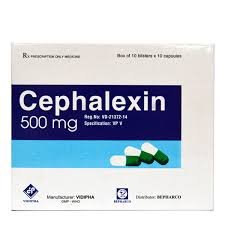
Introduction:
Cephalexin, a commonly prescribed antibiotic, belongs to the cephalosporin class of drugs. It’s widely used to treat various bacterial infections, ranging from skin infections to respiratory tract infections. In this article, we’ll delve into the details of cephalexin, exploring its uses, benefits, potential side effects, and other important considerations.
What is Cephalexin?
Cephalexin, sold under the brand name Keflex among others, is a prescription medication primarily used to treat bacterial infections. It works by interfering with the bacteria’s cell wall formation, thereby inhibiting their growth and reproduction. This antibiotic is effective against a wide range of bacteria, making it a versatile choice for treating various infections.
Uses of Cephalexin:
- Skin Infections: Cephalexin is commonly prescribed for skin infections such as cellulitis and impetigo. These infections are often caused by bacteria like Staphylococcus aureus and Streptococcus pyogenes, against which cephalexin is effective.
- Respiratory Tract Infections: Conditions like bronchitis and pneumonia, which are caused by bacterial infections, can also be treated with cephalexin. It helps alleviate symptoms and speeds up recovery by targeting the bacteria responsible for the infection.
- Ear Infections: Otitis media, an infection of the middle ear, is another condition where cephalexin may be prescribed, especially in cases where the infection is bacterial in nature.
- Urinary Tract Infections (UTIs): Cephalexin is often used to treat UTIs caused by susceptible bacteria. It helps alleviate symptoms like frequent urination, pain or burning sensation during urination, and cloudy or foul-smelling urine.
- Bone Infections: Certain bone infections, particularly those caused by susceptible bacteria, may be treated with cephalexin as part of a comprehensive treatment plan.
Benefits of Cephalexin:
- Broad Spectrum: Cephalexin exhibits a broad spectrum of activity against various bacteria, making it effective against many different types of infections.
- Oral Administration: Cephalexin is typically administered orally, either as capsules or oral suspension. This route of administration makes it convenient for patients to take the medication at home without the need for hospitalization or intravenous administration.
- Well-Tolerated: For most people, cephalexin is well-tolerated with minimal side effects. This makes it suitable for use in a wide range of patient populations, including children and the elderly.
- Fast-Acting: Cephalexin usually begins to work relatively quickly, with many patients experiencing symptom relief within a few days of starting the medication.
- Cost-Effective: Compared to some other antibiotics, cephalexin tends to be relatively affordable, making it accessible to a larger number of patients.
Side Effects and Considerations:
While cephalexin is generally well-tolerated, like any medication, it can cause side effects in some individuals. Common side effects may include:
- Nausea
- Vomiting
- Diarrhea
- Stomach upset
- Rash or itching
These side effects are usually mild and temporary, resolving on their own as the body adjusts to the medication. However, if they persist or worsen, it’s important to notify a healthcare provider.
In rare cases, more serious side effects may occur, such as severe allergic reactions, which can manifest as swelling of the face, tongue, or throat, difficulty breathing, or severe dizziness. If any of these symptoms occur, immediate medical attention is necessary.
It’s also important to note that cephalexin, like other antibiotics, should only be used to treat bacterial infections and is ineffective against viral infections such as the common cold or flu. Overuse or misuse of antibiotics can contribute to antibiotic resistance, making it harder to treat bacterial infections in the future.
Additionally, cephalexin may interact with certain medications or medical conditions. It’s essential to inform your healthcare provider about any other medications you are taking and any underlying health conditions before starting cephalexin treatment.
Conclusion:
Cephalexin is a valuable antibiotic used to treat a wide range of bacterial infections. Its broad spectrum of activity, oral administration, and generally favorable side effect profile make it a popular choice for healthcare providers. However, it’s essential to use cephalexin responsibly, following the guidance of a healthcare professional to ensure appropriate use and minimize the risk of antibiotic resistance and side effects. If you have any questions or concerns about cephalexin or its use, don’t hesitate to consult with your healthcare provider for personalized guidance and advice.
